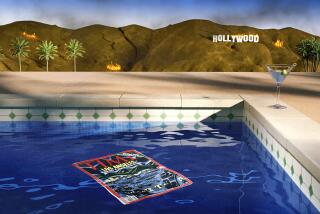Veterans Remember ‘Fort Apache’
NEW YORK — Everyone agrees on this much: it was a hellacious night in the 41st Precinct, back in the early ‘70s, with the phones ringing off the hook. Lt. Lloyd Gittens, a precinct icon, grabbed one of the calls.
Within seconds, he abruptly ended the conversation: “I don’t have time for that. This is Fort Apache.”
Gittens hung up, and a legend was launched.
The 41st Precinct, tucked away on a garbage-strewn block in the crumbling South Bronx, had a new identity. Its spontaneous nom de guerre spawned a Paul Newman movie and several books, while turning the neo-Renaissance precinct house into a national symbol of urban decay.
Its officers embraced the name, producing T-shirts, sweat shirts and a new logo: a precinct house as porcupine, with arrows protruding from its windows. Working there became a badge of honor.
“It was amazing how much went on,” says retired cop John O’Brien, who spent 15 years in the neighborhood. “We did more on one tour than some people did in a year.”
The 41st typically recorded 120 to 130 homicides in the early ‘70s. An average day in 1971 included 17 burglaries, eight robberies, and a half-dozen other major crimes.
There were stories: A grisly bow-and-arrow murder. The discovery of a gorilla, its skin carefully peeled off, near a local meat processing plant. The theft of all four tires from a lieutenant’s car--during his first South Bronx shift.
And then there was the time ... Wait.
“Hey, I can’t tell you all of them,” O’Brien says, laughing.
Last month, O’Brien told some more when he joined about 100 other alumni of the 41st Precinct at a Bronx reunion.
The get-together, the group’s first since 1999, was likely much tamer than the territory they once patrolled.
“It was a very difficult place to work back when it was ‘Fort Apache,’ and the guys got close,” explains Billy Rath, the reunion organizer and a 15-year veteran of the 41st.
O’Brien, who arrived at the precinct in 1968, said the “suits” at police headquarters had no idea what the officers of the 41st faced. “These guys would come in on Monday morning and say, ‘What did those [guys] do in the South Bronx this weekend?’ ” O’Brien, now a manager of internet services for Fordham University, recalls with a laugh.
“Fort Apache”--the nickname summons a vision of a lone outpost of justice amid rampant lawlessness. When the 41st Precinct stood on Simpson Street, it was just that.
The precinct’s alias “was symbolic of what, in those days, was the story of the decline of New York,” says Thomas Reppetto, co-author of “NYPD: A City and Its Police.”
Rath arrived in 1967 to find a neighborhood already in steep decline. The streets belonged to brutal local gangs--the Savage Skulls, the Ghetto Brothers, the Seven Crowns.
Yet few officers transferred out of the precinct; most chose to stay and fight.
“Curiously, the Fort lent us a feeling of immortality,” wrote Lt. Tom Walker in his 1976 book, “Fort Apache, Bronx, NY.”
It was only a feeling, though. In 1971, the year Walker arrived, two 41st Precinct cops were killed. Other officers were lost to alcoholism or psychological woes as they waged an often fruitless fight against the area’s endless crime wave.
For the survivors, the bond forged inside the 41st stretched into the new millennium--which some doubted they would ever see, given that one year in the precinct saw 35 shootouts with local criminals.
“It’s funny,” O’Brien says, “in the Four-One, it was a different thing. It was the people and the cops of the precinct against the world.”
O’Brien and Rath were gone by the mid-’80s, and the neighborhood began a turnaround.
After a decade in which no private businesses opened in the neighborhood, two new supermarkets arrived in the early ‘90s. Now, on a spring Saturday morning, shoppers a block from the old precinct grab groceries at C Town, footwear at Fabco shoes, jeans at Underground Fashion.
Second-grade girls in white dresses line up to have their First Communion pictures taken, oblivious of the local history.
Last year, the precinct had just a dozen murders. The 6,433 burglaries of 1971 plunged to 225. The 2,632 robberies dropped to 239.
The current crop of officers at the 41st report to work at a $13.5-million precinct that opened several blocks away in 1993. While the cops at Fort Apache traded bullets with the locals, the new precinct features a huge recruiting ad painted on its side: “New York’s Finest needs all of New York’s finest.”
“Fort Phoenix,” says Rath, who swapped the South Bronx for the British Virgin Islands after his January 2000 retirement. The old building was gussied up and granted landmark status by the city in 1992; now it’s surrounded by row houses with vinyl siding in shades of blue and beige.
The piles of garbage are long gone; outside 1102 Simpson Street, cans and bottles are separated for recycling. The old precinct serves as a home for some special police units.
The new precinct and its cleaned-up surroundings may make for a better work environment, but Rath believes the current cops may be missing something.
“The kids who work there now don’t come to the reunions,” he says. “I don’t know if they have the camaraderie.”
More to Read
Sign up for Essential California
The most important California stories and recommendations in your inbox every morning.
You may occasionally receive promotional content from the Los Angeles Times.










